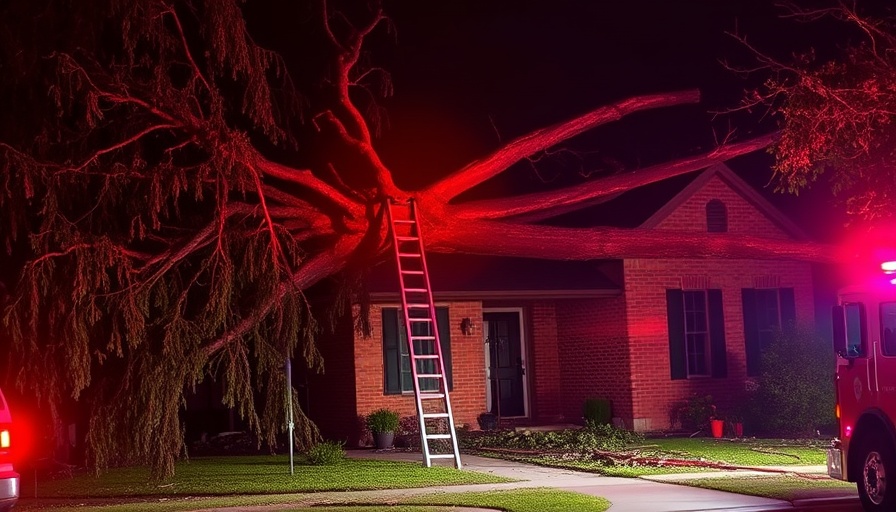
Understanding the Immediate Aftermath of Storm Damage
When storms wreak havoc, the chaos left in their wake can feel insurmountable. Homeowners in Connecticut, especially those in areas like Fairfield County, may find themselves grappling not just with visible destruction, but also with an avalanche of paperwork and procedures to follow. As overwhelming as it may seem, knowing how to handle the first 24 hours post-storm can be the lifeline you need to mitigate further issues down the line.
The First Step: Safety Above All Else
Your safety and that of your family should take precedence the moment the storm passes. Before you step outside, check in with everyone to confirm there are no injuries. Once you’re assured of safety, venture out cautiously. Be on the lookout for potential hazards like downed power lines, or unstable structures that may pose risks. Evacuate or call emergency services if necessary. In highly affected areas, authorities will often dispatch professionals to assess dangerous conditions, allowing you to focus on documentation.
Documenting Damage: Your Key to a Successful Claim
After ensuring your family's safety, it’s crucial to begin documenting the damage right away. Grab your camera or smartphone and take clear pictures of all affected areas—from roof shingles scattered across your lawn to broken garage doors and ruined landscaping. Every detail counts. As alarming as it may feel to see your home like this, thorough documentation serves as solid evidence when filing an insurance claim. Consider keeping a log of every item photographed, noting down specifics like the time and conditions of each photo, which can assist insurance adjusters.
Contacting Your Insurance Company: Timing is Key
Once you’ve documented the damage, promptly reach out to your insurance company. Inform them of the situation, but don’t dive into details. Mention that you are in the process of compiling information and photographs. Be careful not to submit a claim prematurely; without complete documentation, you risk underpayment or denial. An ideal approach might be to compile your documentation over the next day or two, ensuring that all bases are covered.
Temporary Repairs: Tread Lightly
It’s natural to want to jump into repairs right away, but make sure not to undertake permanent fixes until your insurance adjuster evaluates the damage. Temporary repairs, however, can sometimes be necessary to prevent further loss. If you opt to patch a roof or secure a window, keep receipts and take notes about the work performed. Hiring a professional might be wise here; just remember, your insurance might cover the cost of these actions, pending your documentation.
Enlist Expertise: Consider a Public Adjuster
For those feeling overwhelmed, hiring a public adjuster can relieve some of your burden. These professionals specialize in navigating the often complicated insurance claims process, helping ensure your claim is handled effectively. They understand the nuances of the insurance language and can advocate on your behalf. This support can significantly impact the outcome of your claim.
Pet Safety: An Often Overlooked Factor
Don’t forget about your pets during this time. Storms can be terrifying for animals, and their safety is just as important as the structure of your home. Consider how storm damage might impact their living arrangements and ensure they are secure and comfortable during this chaotic period. Always check areas where pets might roam for hazardous conditions, such as sharp debris or exposed wires.
Final Thoughts: Prepare for Future Storms
While it’s impossible to prevent nature's fury, being prepared can make the aftermath more manageable. Consider creating a storm preparedness kit, maintaining outdoor spaces to prevent damage, and keeping your homeowners' insurance updated. Each small step contributes to larger peace of mind. Remember, every storm serves as a reminder to reinforce not just the physical strength of our homes but also our mental resilience.
Following these steps in the critical first 24 hours post-storm can safeguard your interests and sanity. Preparedness isn’t just about resilience; it’s about converting chaos into manageable processes.
 Add Row
Add Row  Add
Add 




Write A Comment